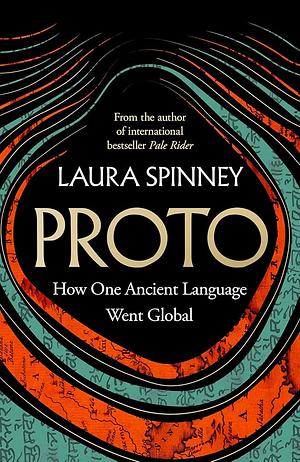
Proto: How One Ancient Language Went Global
by Laura Spinney
Genres: History, Non-fiction, SciencePages: 336
Rating:

Synopsis:One ancient language transformed our world. This is its story.
As the planet emerged from the last ice age, a language was born between Europe and Asia. This ancient tongue, which we call Proto-Indo-European, soon exploded out of its cradle, changing and fragmenting as it went, until its offspring were spoken from Scotland to China. Today those descendants constitute the world's largest language family, the thread that connects disparate cultures: Dante's Inferno to the Rig Veda, The Lord of the Rings to the love poetry of Rumi. Indo-European languages are spoken by nearly half of humanity. How did this happen?
Laura Spinney set out to answer that question, retracing the Indo-European odyssey across continents and millennia. With her we travel the length of the steppe, navigating the Caucasus, the silk roads and the Hindu Kush. We follow in the footsteps of nomads and monks, Amazon warriors and lion kings - the ancient peoples who spread these languages far and wide. In the present, Spinney meets the scientists on a thrilling mission to retrieve those lost languages: the linguists, archaeologists and geneticists who have reconstructed this ancient diaspora. What they have learned has vital implications for our modern world, as people and their languages are on the move again. Proto is a revelatory portrait of world history in its own words.
Laura Spinney’s Proto is the story of Proto-Indo-European, the ancestor language of many modern languages. She tries to trace its origins and branching points based on various evidence: linguistic evidence, of course, but also archaeology and genetics, attempting to unpick not just the words that were spoken but the people who spoke them, and why. I really loved Spinney’s book on the 1918 flu pandemic, Pale Rider, so I was eager for this one.
I did find it an interesting read, though at times a bit difficult to follow because in the end there are a lot of possibilities, and for each branch of the whole chain Spinney discusses the various different theories. For that reason, perhaps, I liked it a bit less than Pale Rider; I guess it felt a bit less focused, more or less of necessity because of the material. It’s hard to pick your way between all the theories, and at times I felt like I needed diagrams to represent all the possibilities.
I did find at first that it wasn’t very focused on the linguistic side of things, lingering on the archaeological evidence of the Yamnaya and what we can extrapolate about them, but it does get more into the technical details (like the “ruki” rule, and satemisation), which was more what I’d expected and hoped for.
There are numbered references, an extensive bibliography and an index, which are all good signs, too!
Rating: 3/5 (“liked it”)
